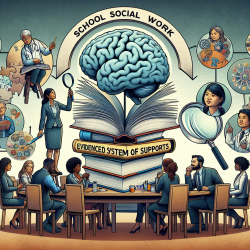Introduction: The Hidden Power of Randomness
In the realm of speech-language pathology, especially when delivering online therapy services to schools, the integration of data-driven approaches is crucial. A recent study titled Quantifying randomness in real networks offers intriguing insights that can be applied to enhance therapeutic outcomes for children.
Understanding Network Randomness
The study explores the concept of randomness within real networks, using the dk-series as a framework to analyze the structural properties of networks. By examining various real-world networks, such as the Internet and human brain fMRI maps, the researchers discovered that many complex properties of these networks are statistically consequential from a few basic properties.
Applying Network Science to Therapy
As practitioners in speech-language pathology, we can leverage these findings to refine our therapeutic approaches. Here’s how:
- Data-Driven Decisions: By understanding that certain network properties can be predicted from basic characteristics, therapists can focus on identifying key factors that influence communication patterns in children.
- Customized Therapy Plans: Just as networks can be reverse-engineered to optimize function, therapy plans can be tailored to target specific communication deficits, ensuring a more personalized approach.
- Efficiency in Therapy Delivery: Recognizing the interdependencies in network properties can lead to more efficient therapy sessions, where efforts are concentrated on areas that yield the most significant improvements.
Encouraging Further Research
The implications of this study extend beyond immediate applications. It encourages practitioners to engage in further research to explore how network science can be integrated into therapeutic practices. By doing so, therapists can contribute to a growing body of knowledge that seeks to optimize therapeutic outcomes through innovative approaches.
Conclusion: A Call to Action
The study of randomness in networks provides a fresh perspective on how we can enhance therapy services for children. By adopting a data-driven mindset and exploring the interplay of network properties, we can create more effective and personalized therapy plans.
To read the original research paper, please follow this link: Quantifying randomness in real networks.










